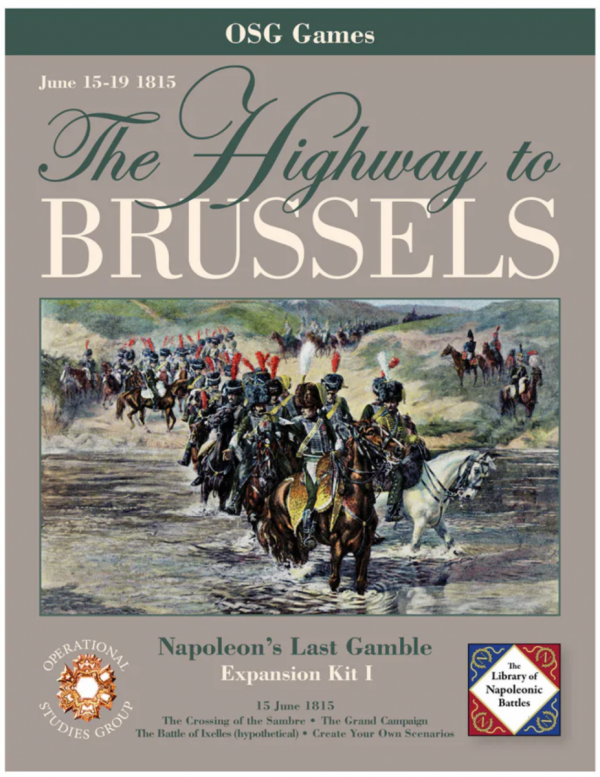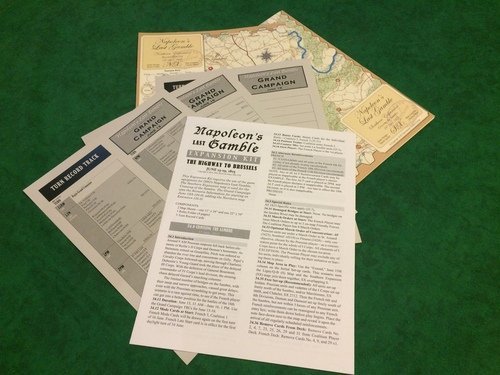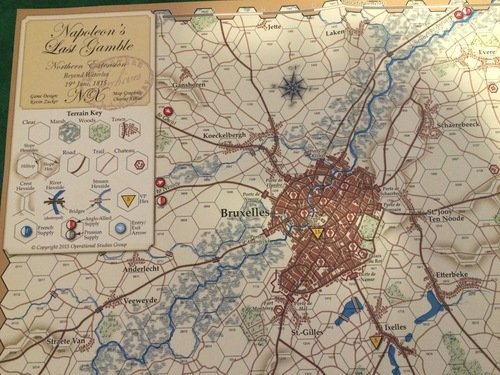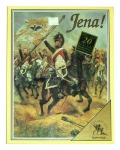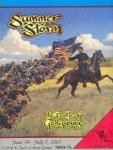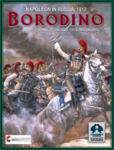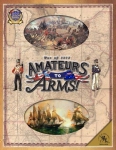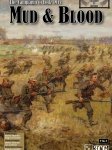-
Załączniki bezpieczeństwa
Załczniki do produktuZałączniki dotyczące bezpieczeństwa produktu zawierają informacje o opakowaniu produktu i mogą dostarczać kluczowych informacji dotyczących bezpieczeństwa konkretnego produktu
-
Informacje o producencie
Informacje o producencieInformacje dotyczące produktu obejmują adres i powiązane dane producenta produktu.Operational Studies Group
-
Osoba odpowiedzialna w UE
Osoba odpowiedzialna w UEPodmiot gospodarczy z siedzibą w UE zapewniający zgodność produktu z wymaganymi przepisami.
This Expansion Kit requires the use of the game equipment for OSG’s Napoleon’s Last Gamble. The Southern Expansion map is used for the Crossing of the Sambre. The Grand Campaign uses the Scenario Information for starting on June 15th (34.0), adding the Northern map Extension (35.0).
This kit allows players to examine the initial stages of the campaign with the extra mapsheets and the four-page scenario booklet. The 11”x34” map adds Charleroi and the Sambre river to the South for the "Opening Round" of the campaign and the 22" x 34" map adds the approach to Brussels and the valley of the Dyle to the North for the final move on Brussels. If the allied army had been obliged to fall back from Waterloo, the roads from Braine-l'Alleud, from Waterloo, and from Wavre, meet at a very excellent position about a mile and a half in front of Brussels.
SCENARIOS
34.0 CROSSING THE SAMBRE
15 June, 1815
Around 9 AM Prussian outposts fell back before elements of Reille’s II Corps and Domon’s horsemen. As Steinmetz retired on Gosseilles, Pirch was ordered to abandon the river line and concentrate on Gilly. Pajol’s Cavalry Corps followed-up, moving through Charleroi. Duhesme’s Young Guard took the place of the delayed III Corps. With the defection of General Bourmont, commander of IV Corps’s lead division, the ensuing chaos delayed Gerard’s marching columns.
The limited number of bridges on the Sambre, with their steep and narrow approaches, caused great delays, even with the Prussians scrambling to get away. This scenario is a race against time, to see if the French player can get into a better position for the battles of the 16th.
35.0 THE GRAND CAMPAIGN
15-19 June, 1815
The Grand Campaign uses the set-up Information for 15 June (34.0), except for the end dates and additional special rules.The Grand Campaign uses the Northern map Extension to extend the game through the 19th.
Crossing the Sambre was no achievement in itself, unless it was followed by a sudden attack on the Prussians, before Wellington could arrive. Napoleon did not anticipate the Duke’s prompt arrival at Quatre-Bras, and failed to ensure the occupation of this point when it was still lightly-occupied by Perponcher’s division.
Image: 1816 map of the local topography and the location of the battle.
36.0 THE BATTLE OF IXELLES
19 June, 1815
Napoleon expected to fight the united Prussian and Anglo-Allied Armies in front of Brussels. This scenario assumes that none of the Prussians marched from Wavre to support Wellington. Hence the Duke would have fought only a medium-sized rearguard action at Waterloo, buying time for his army to arrive near Brussels.
“If the allied army had been obliged to fall back from Waterloo, the roads from Braine-l’Alleud, from Waterloo, and from Wavre, meet upon very strong ground about a mile and a half in front of Brussels—the right ... at Uccle upon the Senne, its centre at Vleurgat, and its left thrown back at Ixelles.”1






